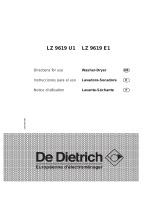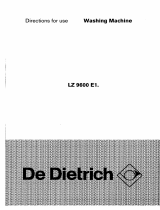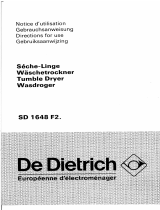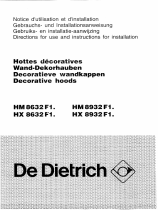De Dietrich LZ9616E1 User manual
- Category
- Washing machines
- Type
- User manual
This manual is also suitable for

DIETRICH DE DIETRICH DE DIETRICH DE DIETRICH DE DIETRICH DE DIETRICH DE DIETRICH DE DIETRICH DE DIETRICH DE DIETRICH DE DIETRICH DE DIETRICH DE DIETRICH DE DIETRICH DE DIETRICH DE DIETRICH DE DIETRICH DE DIETRICH DE DIETRICH DE DIETRICH DE DIETRICH DE DIETRICH DE DIETRICH DE DIETRICH DE DIETRICH DE DIETRICH DE DIETRICH DE DIETRICH DE DIETRICH DE DIETRICH DE DIETRICH DE
H DE DIETRICH DE DIETRICH DE DIETRICH DE DIETRICH DE DIETRICH DE DIETRICH DE DIETRICH DE DIETRICH DE DIETRICH DE DIETRICH DE DIETRICH DE DIETRICH DE DIETRICH DE DIETRICH DE DIETRICH DE DIETRICH DE DIETRICH DE DIETRICH DE DIETRICH DE DIETRICH DE DIETRICH DE DIETRICH DE DIETRICH DE DIETRICH DE DIETRICH DE DIETRICH DE DIETRICH DE DIETRICH DE DIETRICH DE DIETRICH DE DIETRIC
DIETRICH DE DIETRICH DE DIETRICH DE DIETRICH DE DIETRICH DE DIETRICH DE DIETRICH DE DIETRICH DE DIETRICH DE DIETRICH DE DIETRICH DE DIETRICH DE DIETRICH DE DIETRICH DE DIETRICH DE DIETRICH DE DIETRICH DE DIETRICH DE DIETRICH DE DIETRICH DE DIETRICH DE DIETRICH DE DIETRICH DE DIETRICH DE DIETRICH DE DIETRICH DE DIETRICH DE DIETRICH DE DIETRICH DE DIETRICH DE DIETRICH DE
H DE DIETRICH DE DIETRICH DE DIETRICH DE DIETRICH DE DIETRICH DE DIETRICH DE DIETRICH DE DIETRICH DE DIETRICH DE DIETRICH DE DIETRICH DE DIETRICH DE DIETRICH DE DIETRICH DE DIETRICH DE DIETRICH DE DIETRICH DE DIETRICH DE DIETRICH DE DIETRICH DE DIETRICH DE DIETRICH DE DIETRICH DE DIETRICH DE DIETRICH DE DIETRICH DE DIETRICH DE DIETRICH DE DIETRICH DE DIETRICH DE DIETRIC
DIETRICH DE DIETRICH DE DIETRICH DE DIETRICH DE DIETRICH DE DIETRICH DE DIETRICH DE DIETRICH DE DIETRICH DE DIETRICH DE DIETRICH DE DIETRICH DE DIETRICH DE DIETRICH DE DIETRICH DE DIETRICH DE DIETRICH DE DIETRICH DE DIETRICH DE DIETRICH DE DIETRICH DE DIETRICH DE DIETRICH DE DIETRICH DE DIETRICH DE DIETRICH DE DIETRICH DE DIETRICH DE DIETRICH DE DIETRICH DE DIETRICH DE
H DE DIETRICH DE DIETRICH DE DIETRICH DE DIETRICH DE DIETRICH DE DIETRICH DE DIETRICH DE DIETRICH DE DIETRICH DE DIETRICH DE DIETRICH DE DIETRICH DE DIETRICH DE DIETRICH DE DIETRICH DE DIETRICH DE DIETRICH DE DIETRICH DE DIETRICH DE DIETRICH DE DIETRICH DE DIETRICH DE DIETRICH DE DIETRICH DE DIETRICH DE DIETRICH DE DIETRICH DE DIETRICH DE DIETRICH DE DIETRICH DE DIETRIC
DIETRICH DE DIETRICH DE DIETRICH DE DIETRICH DE DIETRICH DE DIETRICH DE DIETRICH DE DIETRICH DE DIETRICH DE DIETRICH DE DIETRICH DE DIETRICH DE DIETRICH DE DIETRICH DE DIETRICH DE DIETRICH DE DIETRICH DE DIETRICH DE DIETRICH DE DIETRICH DE DIETRICH DE DIETRICH DE DIETRICH DE DIETRICH DE DIETRICH DE DIETRICH DE DIETRICH DE DIETRICH DE DIETRICH DE DIETRICH DE DIETRICH DE
H DE DIETRICH DE DIETRICH DE DIETRICH DE DIETRICH DE DIETRICH DE DIETRICH DE DIETRICH DE DIETRICH DE DIETRICH DE DIETRICH DE DIETRICH DE DIETRICH DE DIETRICH DE DIETRICH DE DIETRICH DE DIETRICH DE DIETRICH DE DIETRICH DE DIETRICH DE DIETRICH DE DIETRICH DE DIETRICH DE DIETRICH DE DIETRICH DE DIETRICH DE DIETRICH DE DIETRICH DE DIETRICH DE DIETRICH DE DIETRICH DE DIETRIC
DIETRICH DE DIETRICH DE DIETRICH DE DIETRICH DE DIETRICH DE DIETRICH DE DIETRICH DE DIETRICH DE DIETRICH DE DIETRICH DE DIETRICH DE DIETRICH DE DIETRICH DE DIETRICH DE DIETRICH DE DIETRICH DE DIETRICH DE DIETRICH DE DIETRICH DE DIETRICH DE DIETRICH DE DIETRICH DE DIETRICH DE DIETRICH DE DIETRICH DE DIETRICH DE DIETRICH DE DIETRICH DE DIETRICH DE DIETRICH DE DIETRICH DE
H DE DIETRICH DE DIETRICH DE DIETRICH DE DIETRICH DE DIETRICH DE DIETRICH DE DIETRICH DE DIETRICH DE DIETRICH DE DIETRICH DE DIETRICH DE DIETRICH DE DIETRICH DE DIETRICH DE DIETRICH DE DIETRICH DE DIETRICH DE DIETRICH DE DIETRICH DE DIETRICH DE DIETRICH DE DIETRICH DE DIETRICH DE DIETRICH DE DIETRICH DE DIETRICH DE DIETRICH DE DIETRICH DE DIETRICH DE DIETRICH DE DIETRIC
DIETRICH DE DIETRICH DE DIETRICH DE DIETRICH DE DIETRICH DE DIETRICH DE DIETRICH DE DIETRICH DE DIETRICH DE DIETRICH DE DIETRICH DE DIETRICH DE DIETRICH DE DIETRICH DE DIETRICH DE DIETRICH DE DIETRICH DE DIETRICH DE DIETRICH DE DIETRICH DE DIETRICH DE DIETRICH DE DIETRICH DE DIETRICH DE DIETRICH DE DIETRICH DE DIETRICH DE DIETRICH DE DIETRICH DE DIETRICH DE DIETRICH DE
H DE DIETRICH DE DIETRICH DE DIETRICH DE DIETRICH DE DIETRICH DE DIETRICH DE DIETRICH DE DIETRICH DE DIETRICH DE DIETRICH DE DIETRICH DE DIETRICH DE DIETRICH DE DIETRICH DE DIETRICH DE DIETRICH DE DIETRICH DE DIETRICH DE DIETRICH DE DIETRICH DE DIETRICH DE DIETRICH DE DIETRICH DE DIETRICH DE DIETRICH DE DIETRICH DE DIETRICH DE DIETRICH DE DIETRICH DE DIETRICH DE DIETRIC
DIETRICH DE DIETRICH DE DIETRICH DE DIETRICH DE DIETRICH DE DIETRICH DE DIETRICH DE DIETRICH DE DIETRICH DE DIETRICH DE DIETRICH DE DIETRICH DE DIETRICH DE DIETRICH DE DIETRICH DE DIETRICH DE DIETRICH DE DIETRICH DE DIETRICH DE DIETRICH DE DIETRICH DE DIETRICH DE DIETRICH DE DIETRICH DE DIETRICH DE DIETRICH DE DIETRICH DE DIETRICH DE DIETRICH DE DIETRICH DE DIETRICH DE
H DE DIETRICH DE DIETRICH DE DIETRICH DE DIETRICH DE DIETRICH DE DIETRICH DE DIETRICH DE DIETRICH DE DIETRICH DE DIETRICH DE DIETRICH DE DIETRICH DE DIETRICH DE DIETRICH DE DIETRICH DE DIETRICH DE DIETRICH DE DIETRICH DE DIETRICH DE DIETRICH DE DIETRICH DE DIETRICH DE DIETRICH DE DIETRICH DE DIETRICH DE DIETRICH DE DIETRICH DE DIETRICH DE DIETRICH DE DIETRICH DE DIETRIC
DIETRICH DE DIETRICH DE DIETRICH DE DIETRICH DE DIETRICH DE DIETRICH DE DIETRICH DE DIETRICH DE DIETRICH DE DIETRICH DE DIETRICH DE DIETRICH DE DIETRICH DE DIETRICH DE DIETRICH DE DIETRICH DE DIETRICH DE DIETRICH DE DIETRICH DE DIETRICH DE DIETRICH DE DIETRICH DE DIETRICH DE DIETRICH DE DIETRICH DE DIETRICH DE DIETRICH DE DIETRICH DE DIETRICH DE DIETRICH DE DIETRICH DE
H DE DIETRICH DE DIETRICH DE DIETRICH DE DIETRICH DE DIETRICH DE DIETRICH DE DIETRICH DE DIETRICH DE DIETRICH DE DIETRICH DE DIETRICH DE DIETRICH DE DIETRICH DE DIETRICH DE DIETRICH DE DIETRICH DE DIETRICH DE DIETRICH DE DIETRICH DE DIETRICH DE DIETRICH DE DIETRICH DE DIETRICH DE DIETRICH DE DIETRICH DE DIETRICH DE DIETRICH DE DIETRICH DE DIETRICH DE DIETRICH DE DIETRIC
DIETRICH DE DIETRICH DE DIETRICH DE DIETRICH DE DIETRICH DE DIETRICH DE DIETRICH DE DIETRICH DE DIETRICH DE DIETRICH DE DIETRICH DE DIETRICH DE DIETRICH DE DIETRICH DE DIETRICH DE DIETRICH DE DIETRICH DE DIETRICH DE DIETRICH DE DIETRICH DE DIETRICH DE DIETRICH DE DIETRICH DE DIETRICH DE DIETRICH DE DIETRICH DE DIETRICH DE DIETRICH DE DIETRICH DE DIETRICH DE DIETRICH DE
H DE DIETRICH DE DIETRICH DE DIETRICH DE DIETRICH DE DIETRICH DE DIETRICH DE DIETRICH DE DIETRICH DE DIETRICH DE DIETRICH DE DIETRICH DE DIETRICH DE DIETRICH DE DIETRICH DE DIETRICH DE DIETRICH DE DIETRICH DE DIETRICH DE DIETRICH DE DIETRICH DE DIETRICH DE DIETRICH DE DIETRICH DE DIETRICH DE DIETRICH DE DIETRICH DE DIETRICH DE DIETRICH DE DIETRICH DE DIETRICH DE DIETRIC
DIETRICH DE DIETRICH DE DIETRICH DE DIETRICH DE DIETRICH DE DIETRICH DE DIETRICH DE DIETRICH DE DIETRICH DE DIETRICH DE DIETRICH DE DIETRICH DE DIETRICH DE DIETRICH DE DIETRICH DE DIETRICH DE DIETRICH DE DIETRICH DE DIETRICH DE DIETRICH DE DIETRICH DE DIETRICH DE DIETRICH DE DIETRICH DE DIETRICH DE DIETRICH DE DIETRICH DE DIETRICH DE DIETRICH DE DIETRICH DE DIETRICH DE
H DE DIETRICH DE DIETRICH DE DIETRICH DE DIETRICH DE DIETRICH DE DIETRICH DE DIETRICH DE DIETRICH DE DIETRICH DE DIETRICH DE DIETRICH DE DIETRICH DE DIETRICH DE DIETRICH DE DIETRICH DE DIETRICH DE DIETRICH DE DIETRICH DE DIETRICH DE DIETRICH DE DIETRICH DE DIETRICH DE DIETRICH DE DIETRICH DE DIETRICH DE DIETRICH DE DIETRICH DE DIETRICH DE DIETRICH DE DIETRICH DE DIETRIC
DIETRICH DE DIETRICH DE DIETRICH DE DIETRICH DE DIETRICH DE DIETRICH DE DIETRICH DE DIETRICH DE DIETRICH DE DIETRICH DE DIETRICH DE DIETRICH DE DIETRICH DE DIETRICH DE DIETRICH DE DIETRICH DE DIETRICH DE DIETRICH DE DIETRICH DE DIETRICH DE DIETRICH DE DIETRICH DE DIETRICH DE DIETRICH DE DIETRICH DE DIETRICH DE DIETRICH DE DIETRICH DE DIETRICH DE DIETRICH DE DIETRICH DE
H DE DIETRICH DE DIETRICH DE DIETRICH DE DIETRICH DE DIETRICH DE DIETRICH DE DIETRICH DE DIETRICH DE DIETRICH DE DIETRICH DE DIETRICH DE DIETRICH DE DIETRICH DE DIETRICH DE DIETRICH DE DIETRICH DE DIETRICH DE DIETRICH DE DIETRICH DE DIETRICH DE DIETRICH DE DIETRICH DE DIETRICH DE DIETRICH DE DIETRICH DE DIETRICH DE DIETRICH DE DIETRICH DE DIETRICH DE DIETRICH DE DIETRIC
DIETRICH DE DIETRICH DE DIETRICH DE DIETRICH DE DIETRICH DE DIETRICH DE DIETRICH DE DIETRICH DE DIETRICH DE DIETRICH DE DIETRICH DE DIETRICH DE DIETRICH DE DIETRICH DE DIETRICH DE DIETRICH DE DIETRICH DE DIETRICH DE DIETRICH DE DIETRICH DE DIETRICH DE DIETRICH DE DIETRICH DE DIETRICH DE DIETRICH DE DIETRICH DE DIETRICH DE DIETRICH DE DIETRICH DE DIETRICH DE DIETRICH DE
H DE DIETRICH DE DIETRICH DE DIETRICH DE DIETRICH DE DIETRICH DE DIETRICH DE DIETRICH DE DIETRICH DE DIETRICH DE DIETRICH DE DIETRICH DE DIETRICH DE DIETRICH DE DIETRICH DE DIETRICH DE DIETRICH DE DIETRICH DE DIETRICH DE DIETRICH DE DIETRICH DE DIETRICH DE DIETRICH DE DIETRICH DE DIETRICH DE DIETRICH DE DIETRICH DE DIETRICH DE DIETRICH DE DIETRICH DE DIETRICH DE DIETRIC
DIETRICH DE DIETRICH DE DIETRICH DE DIETRICH DE DIETRICH DE DIETRICH DE DIETRICH DE DIETRICH DE DIETRICH DE DIETRICH DE DIETRICH DE DIETRICH DE DIETRICH DE DIETRICH DE DIETRICH DE DIETRICH DE DIETRICH DE DIETRICH DE DIETRICH DE DIETRICH DE DIETRICH DE DIETRICH DE DIETRICH DE DIETRICH DE DIETRICH DE DIETRICH DE DIETRICH DE DIETRICH DE DIETRICH DE DIETRICH DE DIETRICH DE
H DE DIETRICH DE DIETRICH DE DIETRICH DE DIETRICH DE DIETRICH DE DIETRICH DE DIETRICH DE DIETRICH DE DIETRICH DE DIETRICH DE DIETRICH DE DIETRICH DE DIETRICH DE DIETRICH DE DIETRICH DE DIETRICH DE DIETRICH DE DIETRICH DE DIETRICH DE DIETRICH DE DIETRICH DE DIETRICH DE DIETRICH DE DIETRICH DE DIETRICH DE DIETRICH DE DIETRICH DE DIETRICH DE DIETRICH DE DIETRICH DE DIETRIC
DIETRICH DE DIETRICH DE DIETRICH DE DIETRICH DE DIETRICH DE DIETRICH DE DIETRICH DE DIETRICH DE DIETRICH DE DIETRICH DE DIETRICH DE DIETRICH DE DIETRICH DE DIETRICH DE DIETRICH DE DIETRICH DE DIETRICH DE DIETRICH DE DIETRICH DE DIETRICH DE DIETRICH DE DIETRICH DE DIETRICH DE DIETRICH DE DIETRICH DE DIETRICH DE DIETRICH DE DIETRICH DE DIETRICH DE DIETRICH DE DIETRICH DE
H DE DIETRICH DE DIETRICH DE DIETRICH DE DIETRICH DE DIETRICH DE DIETRICH DE DIETRICH DE DIETRICH DE DIETRICH DE DIETRICH DE DIETRICH DE DIETRICH DE DIETRICH DE DIETRICH DE DIETRICH DE DIETRICH DE DIETRICH DE DIETRICH DE DIETRICH DE DIETRICH DE DIETRICH DE DIETRICH DE DIETRICH DE DIETRICH DE DIETRICH DE DIETRICH DE DIETRICH DE DIETRICH DE DIETRICH DE DIETRICH DE DIETRIC
DIETRICH DE DIETRICH DE DIETRICH DE DIETRICH DE DIETRICH DE DIETRICH DE DIETRICH DE DIETRICH DE DIETRICH DE DIETRICH DE DIETRICH DE DIETRICH DE DIETRICH DE DIETRICH DE DIETRICH DE DIETRICH DE DIETRICH DE DIETRICH DE DIETRICH DE DIETRICH DE DIETRICH DE DIETRICH DE DIETRICH DE DIETRICH DE DIETRICH DE DIETRICH DE DIETRICH DE DIETRICH DE DIETRICH DE DIETRICH DE DIETRICH DE
H DE DIETRICH DE DIETRICH DE DIETRICH DE DIETRICH DE DIETRICH DE DIETRICH DE DIETRICH DE DIETRICH DE DIETRICH DE DIETRICH DE DIETRICH DE DIETRICH DE DIETRICH DE DIETRICH DE DIETRICH DE DIETRICH DE DIETRICH DE DIETRICH DE DIETRICH DE DIETRICH DE DIETRICH DE DIETRICH DE DIETRICH DE DIETRICH DE DIETRICH DE DIETRICH DE DIETRICH DE DIETRICH DE DIETRICH DE DIETRICH DE DIETRIC
DIETRICH DE DIETRICH DE DIETRICH DE DIETRICH DE DIETRICH DE DIETRICH DE DIETRICH DE DIETRICH DE DIETRICH DE DIETRICH DE DIETRICH DE DIETRICH DE DIETRICH DE DIETRICH DE DIETRICH DE DIETRICH DE DIETRICH DE DIETRICH DE DIETRICH DE DIETRICH DE DIETRICH DE DIETRICH DE DIETRICH DE DIETRICH DE DIETRICH DE DIETRICH DE DIETRICH DE DIETRICH DE DIETRICH DE DIETRICH DE DIETRICH DE
H DE DIETRICH DE DIETRICH DE DIETRICH DE DIETRICH DE DIETRICH DE DIETRICH DE DIETRICH DE DIETRICH DE DIETRICH DE DIETRICH DE DIETRICH DE DIETRICH DE DIETRICH DE DIETRICH DE DIETRICH DE DIETRICH DE DIETRICH DE DIETRICH DE DIETRICH DE DIETRICH DE DIETRICH DE DIETRICH DE DIETRICH DE DIETRICH DE DIETRICH DE DIETRICH DE DIETRICH DE DIETRICH DE DIETRICH DE DIETRICH DE DIETRIC
DIETRICH DE DIETRICH DE DIETRICH DE DIETRICH DE DIETRICH DE DIETRICH DE DIETRICH DE DIETRICH DE DIETRICH DE DIETRICH DE DIETRICH DE DIETRICH DE DIETRICH DE DIETRICH DE DIETRICH DE DIETRICH DE DIETRICH DE DIETRICH DE DIETRICH DE DIETRICH DE DIETRICH DE DIETRICH DE DIETRICH DE DIETRICH DE DIETRICH DE DIETRICH DE DIETRICH DE DIETRICH DE DIETRICH DE DIETRICH DE DIETRICH DE
H DE DIETRICH DE DIETRICH DE DIETRICH DE DIETRICH DE DIETRICH DE DIETRICH DE DIETRICH DE DIETRICH DE DIETRICH DE DIETRICH DE DIETRICH DE DIETRICH DE DIETRICH DE DIETRICH DE DIETRICH DE DIETRICH DE DIETRICH DE DIETRICH DE DIETRICH DE DIETRICH DE DIETRICH DE DIETRICH DE DIETRICH DE DIETRICH DE DIETRICH DE DIETRICH DE DIETRICH DE DIETRICH DE DIETRICH DE DIETRICH DE DIETRIC
DIETRICH DE DIETRICH DE DIETRICH DE DIETRICH DE DIETRICH DE DIETRICH DE DIETRICH DE DIETRICH DE DIETRICH DE DIETRICH DE DIETRICH DE DIETRICH DE DIETRICH DE DIETRICH DE DIETRICH DE DIETRICH DE DIETRICH DE DIETRICH DE DIETRICH DE DIETRICH DE DIETRICH DE DIETRICH DE DIETRICH DE DIETRICH DE DIETRICH DE DIETRICH DE DIETRICH DE DIETRICH DE DIETRICH DE DIETRICH DE DIETRICH DE
H DE DIETRICH DE DIETRICH DE DIETRICH DE DIETRICH DE DIETRICH DE DIETRICH DE DIETRICH DE DIETRICH DE DIETRICH DE DIETRICH DE DIETRICH DE DIETRICH DE DIETRICH DE DIETRICH DE DIETRICH DE DIETRICH DE DIETRICH DE DIETRICH DE DIETRICH DE DIETRICH DE DIETRICH DE DIETRICH DE DIETRICH DE DIETRICH DE DIETRICH DE DIETRICH DE DIETRICH DE DIETRICH DE DIETRICH DE DIETRICH DE DIETRIC
DIETRICH DE DIETRICH DE DIETRICH DE DIETRICH DE DIETRICH DE DIETRICH DE DIETRICH DE DIETRICH DE DIETRICH DE DIETRICH DE DIETRICH DE DIETRICH DE DIETRICH DE DIETRICH DE DIETRICH DE DIETRICH DE DIETRICH DE DIETRICH DE DIETRICH DE DIETRICH DE DIETRICH DE DIETRICH DE DIETRICH DE DIETRICH DE DIETRICH DE DIETRICH DE DIETRICH DE DIETRICH DE DIETRICH DE DIETRICH DE DIETRICH DE
H DE DIETRICH DE DIETRICH DE DIETRICH DE DIETRICH DE DIETRICH DE DIETRICH DE DIETRICH DE DIETRICH DE DIETRICH DE DIETRICH DE DIETRICH DE DIETRICH DE DIETRICH DE DIETRICH DE DIETRICH DE DIETRICH DE DIETRICH DE DIETRICH DE DIETRICH DE DIETRICH DE DIETRICH DE DIETRICH DE DIETRICH DE DIETRICH DE DIETRICH DE DIETRICH DE DIETRICH DE DIETRICH DE DIETRICH DE DIETRICH DE DIETRIC
DIETRICH DE DIETRICH DE DIETRICH DE DIETRICH DE DIETRICH DE DIETRICH DE DIETRICH DE DIETRICH DE DIETRICH DE DIETRICH DE DIETRICH DE DIETRICH DE DIETRICH DE DIETRICH DE DIETRICH DE DIETRICH DE DIETRICH DE DIETRICH DE DIETRICH DE DIETRICH DE DIETRICH DE DIETRICH DE DIETRICH DE DIETRICH DE DIETRICH DE DIETRICH DE DIETRICH DE DIETRICH DE DIETRICH DE DIETRICH DE DIETRICH DE
H DE DIETRICH DE DIETRICH DE DIETRICH DE DIETRICH DE DIETRICH DE DIETRICH DE DIETRICH DE DIETRICH DE DIETRICH DE DIETRICH DE DIETRICH DE DIETRICH DE DIETRICH DE DIETRICH DE DIETRICH DE DIETRICH DE DIETRICH DE DIETRICH DE DIETRICH DE DIETRICH DE DIETRICH DE DIETRICH DE DIETRICH DE DIETRICH DE DIETRICH DE DIETRICH DE DIETRICH DE DIETRICH DE DIETRICH DE DIETRICH DE DIETRIC
DIETRICH DE DIETRICH DE DIETRICH DE DIETRICH DE DIETRICH DE DIETRICH DE DIETRICH DE DIETRICH DE DIETRICH DE DIETRICH DE DIETRICH DE DIETRICH DE DIETRICH DE DIETRICH DE DIETRICH DE DIETRICH DE DIETRICH DE DIETRICH DE DIETRICH DE DIETRICH DE DIETRICH DE DIETRICH DE DIETRICH DE DIETRICH DE DIETRICH DE DIETRICH DE DIETRICH DE DIETRICH DE DIETRICH DE DIETRICH DE DIETRICH DE
H DE DIETRICH DE DIETRICH DE DIETRICH DE DIETRICH DE DIETRICH DE DIETRICH DE DIETRICH DE DIETRICH DE DIETRICH DE DIETRICH DE DIETRICH DE DIETRICH DE DIETRICH DE DIETRICH DE DIETRICH DE DIETRICH DE DIETRICH DE DIETRICH DE DIETRICH DE DIETRICH DE DIETRICH DE DIETRICH DE DIETRICH DE DIETRICH DE DIETRICH DE DIETRICH DE DIETRICH DE DIETRICH DE DIETRICH DE DIETRICH DE DIETRIC
DIETRICH DE DIETRICH DE DIETRICH DE DIETRICH DE DIETRICH DE DIETRICH DE DIETRICH DE DIETRICH DE DIETRICH DE DIETRICH DE DIETRICH DE DIETRICH DE DIETRICH DE DIETRICH DE DIETRICH DE DIETRICH DE DIETRICH DE DIETRICH DE DIETRICH DE DIETRICH DE DIETRICH DE DIETRICH DE DIETRICH DE DIETRICH DE DIETRICH DE DIETRICH DE DIETRICH DE DIETRICH DE DIETRICH DE DIETRICH DE DIETRICH DE
H DE DIETRICH DE DIETRICH DE DIETRICH DE DIETRICH DE DIETRICH DE DIETRICH DE DIETRICH DE DIETRICH DE DIETRICH DE DIETRICH DE DIETRICH DE DIETRICH DE DIETRICH DE DIETRICH DE DIETRICH DE DIETRICH DE DIETRICH DE DIETRICH DE DIETRICH DE DIETRICH DE DIETRICH DE DIETRICH DE DIETRICH DE DIETRICH DE DIETRICH DE DIETRICH DE DIETRICH DE DIETRICH DE DIETRICH DE DIETRICH DE DIETRIC
124 890 680 GB/E/F
TEM réseau De Dietrich
7, RUE HENRI BECQUEREL ■ 92854 RUEIL MALMAISON CEDEX
TÉL. 01 47 16 69 50 ■ FAX: 01 47 16 69 88
S.A.S. au capital de 261.560.000 Francs – R.C.S. Nanterre B 393 306 857
124 890 680
LZ 9616 U1 LZ 9616 E1
Directions for use Washing machine
Instrucciones para el uso Lavadora
Notice d’utilisation Lave-linge
GB
E
F

GB
3
Dear customer,
Please read these operating
instructions carefully and pay particular
attention to the safety notes indicated in
the first pages.We recommend that you
keep this instruction booklet for future
reference and pass it on to any future
owners.
Transport damages
When unpacking the appliance, check
that it is not damaged. If in doubt, do
not use it and contact the Service
Centre.
The symbols you will see on some
paragraphs of this booklet have the
following meaning:
The warning triangle and/or the
key words (Warning!, Caution!)
emphasize information that is
particularly important for your
safety or correct functioning of
the appliance.
The information marked with this
symbol provides additional
instructions and practical tips on
the use of the appliance.
Tips and information about
economical and ecological use of
the machine are marked with this
symbol.
Our contribution to the protection of
the environment: we use recycled
paper.
Warnings 4
Disposal 5
Tips for environmental protection 5
Technical specifications 6
Installation 7
Unpacking 7
Positioning 8
Water inlet 8
Water drainage 8
Electrical connection 9
Building-in 10-11
Use 12
Control panel 12
Controls 12
Washing hints 13
Sorting the laundry 13
Temperatures 13
Contents
Before loading the laundry 13
Maximum loads 13
Laundry weights 13
Removing stains 14
Detergents and additives 14-15
International wash code symbols 16
Operating sequence 17-18
Washing programmes 19-20
Maintenance 21
Bodywork 21
Detergent dispenser drawer 21
Drain filter 21
Water inlet filter 21
Emergency emptying out 22
Frost precautions 22
Something not working? 23-24
GB
Advertencias y consejos 26
Eliminación 27
Consejos para la protección del ambiente 27
Características técnicas 28
Instalación 29
Dispositivos de seguridad para el transporte 29
Colocación 30
Carga de agua 30
Descarga de agua 30
Conexión eléctrica 31
Instalación bajo encimera 31-32
Uso 33
Panel de mandos 33
Mandos 33
Consejos para el lavado 34
Selección de las prendas 34
Temperaturas 34
Índice
Antes de cargar la ropa 34
Carga máxima de ropa 34
Pesos de la ropa 34
Eliminación de las manchas 35
Detergentes y aditivos 35-36
Símbolos internacionales para el tratamiento
de los tejidos 37
Secuencia de las operaciones 38-39
Programas de lavado 40-41
Mantenimiento 42
Exterior del aparato 42
Cubeta detergente 42
Filtro de desagüe 42
Filtro del tubo de carga 42
Vaciado de emergencia 43
Precauciones contra el hielo 43
Anomalías de funcionamiento 44-45
E
Avertissements importants 47
Recyclage 48
Conseils écologiques 48
Caractéristiques techniques 49
Installation 50
Débridage 50
Emplacement 51
Arrivée d’eau 51
Vidange 51
Branchement électrique 52
Encastrement 52-53
Utilisation 54
Le bandeau de commande 54
Description des commandes 54
Conseils pour le lavage 55
Le tri du linge par catégorie 55
Températures 55
Sommaire
Avant de charger le linge 56
Charge 55
Traitement des taches 56
Produits de lavage 56-57
Comment faire votre lessive 58-59
Tableau des programmes 60-61
Symboles internationaux pour l’entretien
des textiles 62
Entretien 63
La carrosserie 63
Le tiroir des bacs à produits 63
Le filtre du tuyau d’arrivée d’eau 63
Le filtre de vidange 63
Vidange de secours 64
Précautions contre le gel 64
En cas d’anomalie de fonctionnement 65-66
F

Warnings and tips
General safety
• Repairs to the machine must be
carried out only by qualified
personnel. Repairs carried out by
inexperienced persons could cause
serious danger. Contact your local
Service Centre.
• Never pull the power supply cable to
remove the plug from the socket;
always take hold of the plug itself.
• During high temperature wash
programmes the door glass may get
hot. Do not touch it!
Child safety
• Children are often not aware of how
dangerous electrical appliances can
be.When the machine is working,
children should be carefully
supervised and not be allowed to play
with the appliance.
• The packaging components (e.g.plastic
film, polystyrene) can be dangerous to
children - danger of suffocation! Keep
them out of children’s reach.
• Keep all detergents in a safe place
out of children’s reach.
• Make sure that children or pets do not
climb into the drum.
• When the appliance is to be scrapped,
cut off the electrical supply cable and
destroy the plug with the remaining
cable. Disable the door catch in order
to prevent children from becoming
trapped inside while playing.
Disposal
Packaging materials
The materials marked with the symbol
are recyclable.
>PE< = polyethylene
>PS< = polystyrene
>PP< = polypropylene
This means that they can be recycled
by disposing of them properly in
appropriate collection containers.
Machine
Use authorised disposal sites for your
old appliance. Help to keep your
country tidy!
Tips for environmental
protection
To save water, energy and to help
protect the environment, we
recommend that you follow these tips:
• Normally soiled laundry may be
washed without prewashing in order
to save detergent, water and time (the
environment is protected too!).
• The machine works more
economically if it is fully loaded.
• With adequate pre-treatment, stains
and limited soiling can be removed;
the laundry can then be washed at a
lower temperature.
• Measure out detergent according to
the water hardness, the degree of
soiling and the quantity of laundry
being washed.
GB
5
Warnings and tips
The following warnings are
provided in the interests of overall
safety.You must read them
carefully before installing or using
the appliance.
Installation
• All internal packing must be removed
before using the appliance. Serious
damage may be caused to the
machine or adjacent furniture if the
protective transit devices are not
removed or are not completely
removed. Refer to the relevant
paragraph in the instruction book.
• Any electrical work required to install
this appliance must be carried out by
a qualified electrician.
• Any plumbing work required to install
this appliance must be carried out by
a qualified plumber.
• After having installed the machine,
check that it is not standing on its
electrical supply cable.
• If the appliance is placed on a
carpeted floor, ensure that air can
circulate freely between the feet and
the floor.
Use
• This appliance is designed for
domestic use. It must not be used for
purposes other than those for which it
was designed.
• Only wash fabrics which are designed
to be machine washed. Follow the
instructions on each garment label.
• Do not overload the appliance. Follow
the instructions in the instruction book.
• Make sure that all pockets are empty.
Objects such as coins, safety pins,
pins and screws can cause extensive
damage.
• Do not machine wash garments
saturated with petroleum, methylated
spirits, trichlorethylene, etc. If such
fluids have been used to remove
stains prior to washing, wait until they
have completely evaporated from the
fabric before placing garments in the
appliance.
• Place small items such as socks,
belts, etc. in a cloth bag or pillowcase
to prevent them getting trapped
between the drum and the tub.
• Use only the recommended quantities
of fabric softener. An excessive
amount could damage the laundry.
• Leave the porthole door slightly ajar
when the appliance is not in use.This
preserves the door seal and prevents
the formation of musty smells.
• Always check that water has emptied
out before opening the door. If not,
drain the water following the
instructions in the instruction book.
• Always unplug the appliance and shut
the water tap after use.
GB
4

Installation
Unpacking
All transit bolts and packing must be
removed before using the appliance.
You are advised to keep all transit devices
so that they can be refitted if the machine
ever has to be transported again.
1. Using a spanner, unscrew and remove
the rear right-hand bolt and lay the
machine on its back, taking care not to
squash the hoses.This can be avoided
by placing one of the corner packing
pieces between the machine and the
floor.
2. Remove the polystyrene base and take
off the bottom panel by unscrewing the
central screw.
3. Carefully remove the right-hand bag.
P0015
P0457
P0255
4. Carefully slide out the other bags.
5. Re-fit the bottom panel using the 4
screws supplied with the door hinges
(in the plastic bag) and the previously
removed screw.
6. Set the machine upright and remove the
two remaining bolts from the back.
7. Pull out the three plastic spacers from
the holes into which the bolts were fitted.
8. Plug the open holes with the plugs which
you will find at the back of the appliance.
P0020
P0256
P0453
P0016
GB
7
Technical specifications
DIMENSIONS Height 82 cm
Width 60 cm
Depth 54 cm
MAXIMUM LOAD Cotton 4.5 kg
Synthetics 2 kg
Delicates 2 kg
Woollens 1 kg
SPIN SPEED 1200 rpm max.
LZ 9616 E1 LZ 9616 U1
POWER SUPPLY VOLTAGE/FREQUENCY 220-230V/50 Hz 230-240V/50 Hz
TOTAL POWER ABSORBED 2200 W 2050 W
MINIMUM FUSE PROTECTION 10 A 10 A
WATER PRESSURE Minimum 50 kPa
Maximum 800 kPa
This appliance complies with the following EEC Directives:
73/23/EEC of 19/02/73 relating to low voltage
89/336/EEC of 03/05/89 relating to electromagnetic compatibility.
GB
6

Installation
Electrical connection
(LZ 9616 E1)
This machine is designed to operate on a
220-230 V, single-phase, 50 Hz supply.
Check that your domestic electrical
installation can take the maximum load
required (2.2 kW), also taking into account
any other appliances in use.
Connect the machine to an earthed socket.
The manufacturer declines any
responsibility for damage or injury
through failure to comply with the
above safety precaution.
Should the appliance power supply
cable need to be replaced, this
should be carried out by our Service
Centre.
Important! The power supply cable must be
easily accessible after installing the
machine.
Electrical connection
(LZ 9616 U1)
Any electrical work required to install this
appliance should be carried out by a
qualified electrician or competent person.
The machine is designed to operate on a
230-240 V, single phase, 50 Hz supply.
WARNING:THIS APPLIANCE
MUST BE EARTHED.
The manufacturer declines any
liability should this safety
measure not be observed.
The appliance is supplied with a 13 amp
plug fitted. In the event of having to change
the fuse in the plug supplied, a 13amp
ASTA approved (BS1363A) fuse must be
used.
Should the plug need to be replaced for any
reason, proceed as described below:
Green and Yellow - Earth
Blue - Neutral
Brown - Live
The wire coloured green and yellow must be
connected to the terminal marked with the
letter «E» or by the earth symbol or
coloured green and yellow.
The wire coloured blue must be connected
to the terminal marked «N» or coloured
black.
The wire coloured brown must be connected
to the terminal marked «L» or coloured red.
Upon completion there must be no cut, or
stray strands of wire present and the cord
clamp must be secure over the outer
sheath.
A cut off plug inserted into a 13
amp socket is a serious safety
(shock) hazard.
Ensure that the cut off plug is
disposed of safely.
Should the appliance power
supply cable need to be replaced,
this should be carried out by our
Service Centre.
Important! The power supply cable must be
easily accessible after installing the
machine.
GREEN & YELLOW
BROWN
CORD CLAMP
BLUE
13A
P1041
E
N
L
GB
9
Installation
Positioning
Install the machine on a flat hard floor.
Make sure that air circulation around the
machine is not impeded by carpets, rugs
etc. Check that the machine does not touch
the wall or other kitchen units.
Carefully level by screwing the adjustable
feet in or out. Never place cardboard, wood
or similar materials under the machine to
compensate for any unevenness in the floor.
Water inlet
Connect the water inlet hose to a tap with a
3/4” thread.
The other end of the inlet hose which
connects to the machine can be turned in
any direction. Simply loosen the fitting,
rotate the hose and retighten the fitting,
making sure there are no water leaks.
The inlet hose must not be lengthened. If it
is too short and you do not wish to move the
tap, you will have to purchase a new, longer
hose specially designed for this type of use.
P0021
P1088
P1051
Water drainage
The end of the drain hose can be positioned
in three ways:
Hooked over the edge of a sink using the
plastic hose guide supplied with the
machine. In this case, make sure the end
cannot come unhooked when the machine
is emptying.
This could be done by tying it to the tap with
a piece of string or attaching it to the wall.
In a sink drain pipe branch. This branch
must be above the trap so that the bend is
at least 60 cm above the ground.
Directly into a drain pipe at a height of not
less than 60 cm and not more than 90 cm.
The end of the drain hose must always be
ventilated, i.e. the inside diameter of the
drain pipe must be larger than the outside
diameter of the drain hose.
The drain hose must not be kinked. Run it
along the floor; only the part near the
drainage point must be raised.
P0023
P0022
GB
8

Building-in
c) Mounting the door
Fix the hinges to the machine by means of
the M5x9 screws (3-Fig. B).The hinges can
be adjusted to compensate for possible
uneven thickness of the door.
To align the door perfectly it is necessary to
loosen the screw (3-Fig. B), adjust the door
and tighten the screw again.
d) Counter-magnet (6)
The appliance is pre-arranged for a
magnetic closure of the door.To enable a
correct operation of this device, it is
necessary to screw the counter-magnet (6)
(steel disk + rubber ring) into the inner side
of the door.
Its position must correspond to the magnet
(4) on the appliance (see picture D).
P0984
6
4
D
If the door has to be opened from left to
right, proceed as follows:
• remove the magnet (4) and the plates (5)
on top and on the bottom (Fig. B).
• Move plates (7) from left to right (Fig. A
and E).
• Fit the magnet (4) again as per picture E.
4
6
5
1
2
3
7
E
P0983
GB
11
Building-in
This appliance has been designed to be
built into the kitchen furniture.
The recess should have the dimensions
shown in picture A.
Preparation and assembly of
the door
The machine is originally pre-arranged for
the assembly of a door opening from right to
left.
In this case it is sufficient to screw in the
hinges (1) and the counter-magnet (6)
provided with the appliance, at the right
level (Fig. B).
4
1
2
3
6
1
2
3
P0982
7
B
5
P0965
820 min
600 min.
600
596
416
176,5
818
541
195
490
160
120
90
8
515
165
A
a) Door
The dimensions of the door should be:
- width 595-598 mm
- thickness 16-22 mm
The height (C-Fig. C) depends on the height
of the adjacent furniture’s base.
b) Hinges
To mount the hinges it is necessary to drill
two holes (dia. 35 mm, depth 14 mm) on the
inner side of the door.The distance between
the holes must be 416 mm.
The distance (B) from upper edge of the
door to the centre of the hole depends on
the adjacent furniture’s dimensions.
The required dimensions are given in the
picture C.
The hinges will be fixed to the door by
means of screws for wood (2-Fig. B).
Ø 35 mm - Depth 14 mm
16-22
B
C
22+1,5
595-598
416
P0026
C
GB
10

Washing hints
Sorting the laundry
Follow the wash code symbols on each
garment label and the manufacturer’s
washing instructions.
Sort the laundry as follows: whites,
coloureds, synthetics, delicates, woollens.
Temperatures
95° for normally soiled white cottons
and linen (e.g. tea cloths, towels,
tablecloths, sheets...)
60° for normally soiled, colour fast
garments (e.g. shirts, night
dresses, pyjamas....) in linen,
cotton or synthetic fibres and for
lightly soiled white cotton (e.g.
underwear).
(cold) for delicate items (e.g. net
30°-40° curtains), mixed laundry
including synthetic fibres and
woollens bearing the label “pure
new wool, machine washable,
non-shrink”.
Before loading the laundry
Never wash whites and coloureds together.
Whites may lose their “whiteness” in the
wash.
New coloured items may run in the first
wash; they should therefore be washed
separately the first time.
Make sure that no metal objects are left
in the laundry (e.g. hair clips, safety pins,
pins).
Button up pillowcases, close zip fasteners,
hooks and poppers.Tie any belts or long tapes.
Remove persistent stains before washing.
Rub particularly soiled areas with a special
detergent or detergent paste.
Treat curtains with special care. Remove
hooks or tie them up in a bag or net.
Maximum loads
Recommended loads are indicated in the
programme charts.
General rules:
Cotton, linen: drum full but not too tightly
packed;
Synthetics: drum no more than half full;
Delicate fabrics and woollens: drum no
more than one third full.
Washing a maximum load makes the most
efficient use of water and energy.
For heavily soiled laundry, reduce the load
size.
Laundry weights
The following weights are indicative:
bathrobe 1200 g
napkin 100 g
quilt cover 700 g
sheet 500 g
pillow case 200 g
tablecloth 250 g
towelling towel 200 g
tea cloth 100 g
night dress 200 g
ladies’ briefs 100 g
man’s work shirt 600 g
man’s shirt 200 g
man’s pyjamas 500 g
blouse 100 g
men’s underpants 100 g
GB
13
Use
1 Detergent dispenser drawer
Prewash
Main wash
Fabric softener
2 Operating pilot light
This light illuminates when the machine
starts operating and goes out when the
ON/OFF button is released.
3 ON/OFF button
Press this button to start the machine: the
“pilot” light will come on.The same button is
used to switch the machine off.
Before selecting a programme or
changing an ongoing programme the
machine must be switched off by
depressing the same button.
4 Spin speed reduction button
By depressing this button the spin speed
is reduced from 1200 to 600 rpm
on programmes for cotton and linen
and from 650 to 400 rpm on programme
(short spin).
600
1200
P0301S
Control panel
5 Extra rinse button
By depressing this button on programmes 1
and 2 the machine will perform 4 rinses
instead of 3.
To be used for people with a very delicate
skin (allergic to detergents) or in areas
where the water is very soft.
6 Temperature selector dial
Turn this dial to select the washing
temperature.
Position = cold wash.
Depress the dial to pop it out.
7 Programme selector dial
To select the required programme, turn this
dial clockwise until the programme number
or symbol is exactly opposite the pointer.
Depress the dial to pop it out.
GB
12
LZ 9616 U
600
1200
1 2 3 4 5 6 7

Washing hints
Quantity of detergent to be
used
The type and quantity of detergent will
depend on the type of fabric, load size,
degree of soiling and hardness of the water
used.
Water hardness is classified in so-called
“degrees” of hardness. Information on
hardness of the water in your area can be
obtained from the relevant water supply
company, or from your local authority.
Follow the product manufacturers’
instructions on quantities to use.
Use less detergent if:
- you are washing a small load,
- the laundry is lightly soiled,
- large amounts of foam form during
washing.
Degrees of water hardness
GB
15
Washing hints
Removing stains
Stubborn stains may not be removed by just
water and detergent. It is therefore advisable
to treat them prior to washing.
Blood: treat fresh stains with cold water. For
dried stains, soak overnight in water with a
special detergent then rub in the soap and
water.
Oil based paint: moisten with benzine stain
remover, lay the garment on a soft cloth and
dab the stain; treat several times.
Dried grease stains: moisten with
turpentine, lay the garment on a soft surface
and dab the stain with the fingertips and a
cotton cloth.
Rust: oxalic acid dissolved in hot water or a
rust removing product used cold. Be careful
with rust stains which are not recent since
the cellulose structure will already have
been damaged and the fabric tends to hole.
Mould stains: treat with bleach, rinse well
(whites and fast coloureds only).
Grass: soap lightly and treat with bleach
(whites and fast coloureds only).
Ball point pen and glue: moisten with
acetone (*), lay the garment on a soft cloth
and dab the stain.
Lipstick: moisten with acetone as above,
then treat stains with methylated spirits.
Remove any residual marks from white
fabrics with bleach.
Red wine: soak in water and detergent,
rinse and treat with acetic or citric acid, then
rinse.Treat any residual marks with bleach.
Ink: depending on the type of ink, moisten
the fabric first with acetone (*), then with
acetic acid; treat any residual marks on white
fabrics with bleach and then rinse thoroughly.
Tar stains: first treat with stain remover,
methylated spirits or benzine, then rub with
detergent paste.
(*) do not use acetone on artificial silk.
Detergents and additives
Good washing results also depend on the
choice of detergent and use of the correct
quantities to avoid waste and protect the
environment. Although biodegradable,
detergents contain substances which, in
large quantities, can upset the delicate
balance of nature.
The choice of detergent will depend on the
type of fabric (delicates, woollens, cottons,
etc.), the colour, washing temperature and
degree of soiling.
All commonly available washing machine
detergents may be used in this appliance:
- powder detergents for all types of fabric,
- powder detergents for delicate fabrics
(60°C max) and woollens,
- liquid detergents, preferably for low
temperature wash programmes (60°C
max) for all types of fabric, or special for
woollens only.
The detergent and any additives must be
placed in the appropriate compartments of
the dispenser drawer before starting the
wash programme.
If using concentrated powder or liquid
detergents, a programme without prewash
must be selected.
The washing machine incorporates a
recirculation system which allows an optimal
use of the concentrated detergent.
Pour liquid detergent into the dispenser
drawer compartment marked just
before starting the programme.
Any fabric softener or starching additives
must be poured into the compartment
marked before starting the wash
programme.
Follow the product manufacturer’s
recommendations on quantities to use and
do not exceed the “MAX” mark in the
detergent dispenser drawer.
GB
14
Level
1
2
3
4
soft
medium
hard
very hard
0- 7
8-14
15-21
more
than 21
0-15
16-25
26-37
more
than 37
Characteristic
Degrees
German
°dH
French
°T.H.

Operating sequence
Before washing your first load of
laundry, we recommend that you run a
cotton cycle at 60°C, with the machine
empty, in order to remove any
manufacturing residue from the drum and
tub.
Pour half a measure of detergent into the
main wash compartment and start up the
machine.
1. Place the laundry in the
drum
Open the door.
Place the laundry in the drum, one item at a
time, shaking them out as much as possible.
Close the door.
2. Measure out the detergent
Pull out the dispenser drawer until it stops.
Measure out the amount of detergent
recommended by the manufacturer in a
graduated cup and pour it into the main
wash compartment .
If you wish to carry out the prewash, pour
detergent into the appropriate compartment
marked .
P0005
P0006
3. Measure out the additive
If required, pour fabric softener into the
compartment marked without
exceeding the “MAX” mark.
4. Select the temperature
Turn the dial to the required setting.
5. Select the required option(s)
600
1200
P0128
95
GB
17
International wash code symbols
GB
16
DELICATE WASH
BLEACHING
IRONING
Hot iron
max 200°C
Warm iron
max 150°C
Lukewarm iron
max 110°C
Do not iron
DRY
CLEANING
Dry cleaning
in all solvents
Dry cleaning in perchlor-
ethylene, petrol, pure
alcohol, R111 & R113
Dry cleaning in petrol,
pure alcohol
and R113
Do not
dry clean
DRYING
Flat On the line On clothes hanger Tumble dry
High
temperature
Low
temperature
Do not tumble dry
Max. wash
temperature 95°C
Max. wash
temperature 60°C
Max. wash
temperature 40°C
Max. wash
temperature 30°C
Hand
wash
Do not wash
at all
Bleach in cold water Do not bleach
A
P
F
ENERGETIC WASH

Programme table
Washing programmes for cotton and linen
Max. load: 4.5 kg
Pro-
Addi- Consumptions(**)
gramme
Temp. Fabrics tional Energy Water Duration
functions kWh lt min.
1 70°-95° Whites with prewash, for 2.5 72 160
example work garments,
sheets, household linen,
underwear, towels
2 70°-95° Whites without prewash, 2.1 57 135
for example household
linen, sheets, shirts,
underwear
2e 60° Whites economy, for 1.05 54 130
example lightly soiled
sheets, tablecloths
2 30°-60°(*) Coloureds, for example 1.03 54 125
shirts, blouses, underwear,
terry cloths
COLD This programme can be 0.1 57 55
Rinses used for rinsing hand
washed garments
COLD Hand washed garments - 19 18
Softeners to be starched or softened
Separate spin for cotton - - 12
Spin and linen
(*) In compliance with EC directive 92/75, the consumption figures indicated on the energy
label refer to the 60°C wash programme for cotton (programme “2”).
(**) The consumption data shown on this chart is to be considered purely indicative, as it may
vary depending on the quantity and type of laundry, on the inlet water temperature and on
the ambient temperature. It corresponds to the highest temperature for each wash
programme.
600
1200
600
1200
600
1200
600
1200
600
1200
600
1200
600
1200
GB
19
Operating sequence
6. Select the programme and
start the machine
Turn the programme selector dial clockwise
to the required programme and press the
On/Off button : the operating pilot light
comes on and the machine starts to
operate.
P0045
P0379
2
7. At the end of the
programme
The machine stops automatically.
If you have selected a programme which
ends with the water of the last rinse left in
the tub, drain the water before opening the
door. Select programme (drain) or
(short spin).
Wait one or two minutes before opening the
door to give the electric locking mechanism
time to release it.
Depress the On/Off button again to switch
the machine off.The operating pilot light
goes out.
Remove the laundry.
Turn the drum by hand to make sure it is
completely empty, so as to avoid any
forgotten items being damaged in a
subsequent wash (e.g. shrinking) or their
colour running into a load of whites.
Release any buttons which have been
pressed.
Turn the water tap off and unplug the
machine.
Leave the door ajar to air the machine.
GB
18

Maintenance
1. Bodywork
Clean the outside of the machine with warm
water and a neutral, non-abrasive
household detergent. Rinse with clean water
and dry with a soft cloth.
Important: do not use methylated spirits,
solvents or similar products to clean the
bodywork.
2. Detergent dispenser drawer
After a while, detergents and fabric
softeners leave deposits in the drawer.
Clean the drawer from time to time by
rinsing it under a running tap.To remove the
drawer from the machine, press the button
in the rear left-hand corner.
To facilitate cleaning, the top part of the
additive compartments can be removed.
Detergent can also accumulate inside the
drawer recess: clean it with an old
toothbrush. Refit the drawer after cleaning.
P0038
P0009
P0010
3. Drain filter
The drain filter collects threads and small
objects inadvertently left in the laundry.
Check regularly that the filter is clean.
Place a container under the filter and
unscrew it.
Pull out the filter.
Clean the filter under a running tap, then
refit it, screwing it fully in.
4.Water inlet filter
If you notice that the machine is taking
longer to fill, check that the filter in the water
inlet hose is not blocked.
Turn off the water tap.
Unscrew the hose from the tap.
Clean the filter in the hose with a stiff brush.
Screw the hose back onto the tap.
P0040
P0039
P0037
GB
21
Programme table
Washing programmes for synthetics, mixed fabrics ,
delicates and wool
Max. load: 2 kg, wool 1 kg
Pro-
Addi- Consumptions(**)
gramme
Temp. Fabrics tional Energy Water Duration
functions kWh lt min.
3 30°-60° Synthetics with prewash, 1.15 62 90
underwear, coloured items,
shirts, blouses
4 30°-60° Synthetics without prewash, 0.7 47 65
for example shirts, blouses,
mixed fabrics
4e 40° Synthetics, economy, lightly 0.35 47 50
soiled synthetic or mixed
fabrics, underwear, shirts
Separate spin for synthetics, - - 6
Short delicates and wool
Spin
5 30° Wool 0.38 44 40
Special programme for
garments bearing the “Pure
new wool, non-shrink,
machine washable” label
6 30°-40° Delicates, for example 0.5 44 40
curtains
For emptying out the last rinse - - 1
Drain water of these programmes
At the end of these programmes the machine stops with the water of the last rinse left in the
tub to prevent the fabrics from creasing.To drain the water select programme (Drain) or
(short spin).
(**) The consumption data shown on this chart is to be considered purely indicative, as it may
vary depending on the quantity and type of laundry, on the inlet water temperature and on
the ambient temperature.
600
1200
GB
20

Something not working?
Problems which you can resolve yourself.
Problem Possible cause
GB
23
Maintenance
5. Emergency emptying out
If the water is not discharged (outlet pump is
blocked, filter or drain hose are clogged),
proceed as follows to empty out the
machine:
• pull out the plug from the power socket;
• close the water tap;
• if necessary, wait until the water has
cooled down;
• place a bowl on the floor;
• put the drain hose end into the bowl and
let the water come out.
Should it not be possible to have access to
the drain hose because, for example, the
appliance is built in the kitchen furniture,
slightly loosen the drain filter after placing a
bowl on the floor, to let the water come out
slowly.
At the end screw the filter again.
6. Frost precautions
If the machine is installed in a place where
the temperature could drop below 0°C,
proceed as follows:
• Close the water tap and unscrew the
water inlet hose from the tap.
• Place the end of the drain hose and that
of the inlet hose in a bowl placed on the
floor.
• Select drain programme and run it
until the machine stops.
• Remove the plug from the socket.
• Screw the water inlet hose back on and
put the drain hose back in its place.
By doing this, any water remaining in the
machine is removed, avoiding the formation
of ice and, consequently, breakage of the
affected parts.
When you use the machine again, make
sure that the ambient temperature is above
0°C.
GB
22
• The machine does not start up: • The door is not firmly closed.
• The machine is not plugged in or there is
no power at the socket.
• The main fuse has blown.
• The programme selector dial is not
positioned correctly and the ON/OFF
button has not been depressed.
• The machine does not fill:
• The machine fills then empties
immediately:
• The machine does not empty and/or
does not spin:
• There is water on the floor:
• Unsatisfactory washing results:
• The machine vibrates or is noisy:
• The water tap is closed.
• The inlet hose is squashed or kinked.
• The filter in the inlet hose is blocked.
• The door is not properly closed.
• The end of the drain hose is too low.
Refer to relevant paragraph in “water
drainage” section.
• The drain hose is squashed or kinked.
• A programme which stops with water in
drum has been selected.
• The drain filter is clogged.
• Too much detergent or unsuitable
detergent (creates too much foam) has
been used.
• Check whether there are any leaks from
one of the inlet hose fittings. It is not
always easy to see this as the water runs
down the hose; check to see if it is damp.
• The drain hose is damaged.
• Too little detergent or unsuitable detergent
has been used.
• Stubborn stains have not been treated
prior to washing.
• The correct temperature was not selected.
• Excessive laundry load.
• The transit bolts and packing have not
been removed.
• The support feet have not been adjusted.
• The laundry is not evenly distributed in the
drum.
• Maybe there is very little laundry in the drum.

Something not working?
GB
24
Problem Possible cause
• The door will not open:
• Spinning starts late or the machine
does not spin:
• The machine makes an unusual noise
• No water is visible in the drum
If you are unable to identify or solve the
problem, contact our service centre.
Before telephoning, make a note of the
model, serial number and purchase date
of your machine: the Service Centre will
require this information.
• The programme is still running.
• The door lock has not been released.
• There is water in the drum.
• The electronic unbalance detection device
has cut in because the laundry is not
evenly distributed in the drum.The
laundry is redistributed by reverse rotation
of the drum.This may happen several
times before the unbalance disappears
and normal spinning can resume. If, after
10 minutes, the laundry is still not evenly
distributed in the drum, the machine will
not spin. In this case, redistribute the load
manually and select the spin programme.
• The machine is fitted with a type of motor
which makes an unusual noise compared
with other traditional motors.This new
motor ensures a softer start and more
even distribution of the laundry in the
drum when spinning, as well as increased
stability of the machine.
• Machines based on modern technology
operate very economically using very little
water without affecting performance.
Mod. ..........
Prod. No. ...........
Ser. No. .........
Mod.
..........
Ser.
P0042
-
 1
1
-
 2
2
-
 3
3
-
 4
4
-
 5
5
-
 6
6
-
 7
7
-
 8
8
-
 9
9
-
 10
10
-
 11
11
-
 12
12
-
 13
13
De Dietrich LZ9616E1 User manual
- Category
- Washing machines
- Type
- User manual
- This manual is also suitable for
Ask a question and I''ll find the answer in the document
Finding information in a document is now easier with AI
Related papers
-
 De Dietrich LZ9619U1 User manual
De Dietrich LZ9619U1 User manual
-
 De Dietrich LZ9600E1 Owner's manual
De Dietrich LZ9600E1 Owner's manual
-
 De Dietrich DVF330JU1 Owner's manual
De Dietrich DVF330JU1 Owner's manual
-
 De Dietrich DVI360BE1 Owner's manual
De Dietrich DVI360BE1 Owner's manual
-
 De Dietrich DVF440JE1 Owner's manual
De Dietrich DVF440JE1 Owner's manual
-
 De Dietrich LZ9619U1 Owner's manual
De Dietrich LZ9619U1 Owner's manual
-
 De Dietrich SD1648F2 Owner's manual
De Dietrich SD1648F2 Owner's manual
-
 De Dietrich VZ9636U1 Owner's manual
De Dietrich VZ9636U1 Owner's manual
-
 De Dietrich HM8932F1 Owner's manual
De Dietrich HM8932F1 Owner's manual
-
 De Dietrich HN6600E1 Owner's manual
De Dietrich HN6600E1 Owner's manual
Other documents
-
Groupe Brandt LZ9619U1 Owner's manual
-
Groupe Brandt WB0376D1 Owner's manual
-
Groupe Brandt FB4347D2 Owner's manual
-
Groupe Brandt FW2547D1 Owner's manual
-
Groupe Brandt WM1630F1 Owner's manual
-
CORBERO LI860 User manual
-
Groupe Brandt WW0670D1 Owner's manual
-
Groupe Brandt WB1159F1 Owner's manual
-
Groupe Brandt FA2544D2 Owner's manual
-
Groupe Brandt DTV103XE1 Owner's manual






















